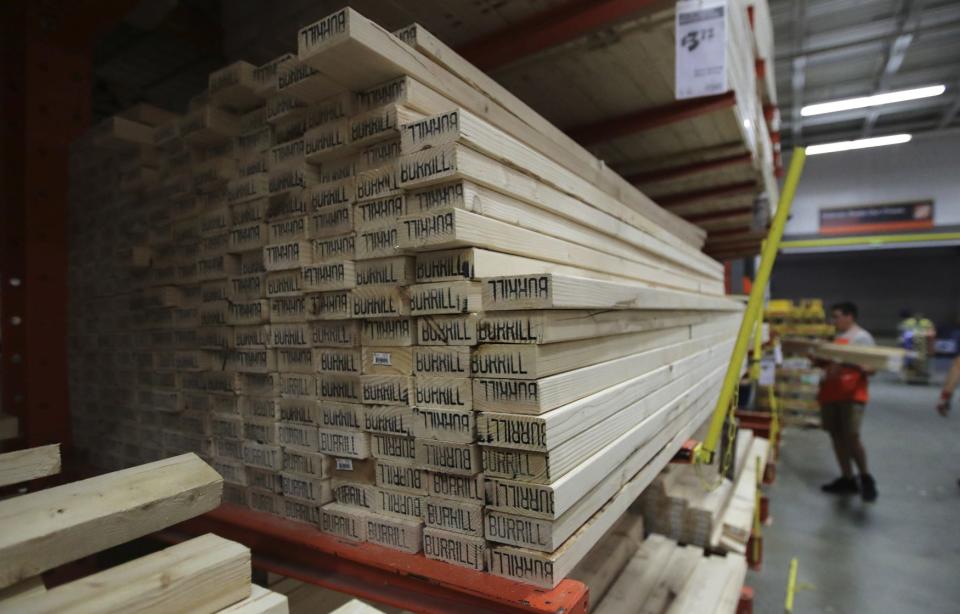Around the House: Buy the right treated lumber for your next project
Summer is the time of year that many decks, porches, and docks are built or restored because it is time to enjoy barbecues and the great outdoors.
However, a mistake a lot of consumers and even builders make is they order treated lumber without understanding that there are many different types. Ordering the wrong treated lumber for an application can result in premature failures, which are costly due to the prices of material and labor.
More Around the House: The best homes have great foundations
Sense of relief: Disruptions are a blessing in disguise for housing
Here are a few things you should consider when buying treated lumber:
If you go to the store and ask for treated lumber, be sure to know whether it is above-ground contact or ground contact treated lumber. This will get a little confusing, but it is important information.
Above ground, contact-treated lumber is used for exactly what it says. If you are doing a project and want it to be weather and bug-resistant, you should use this item. However, the post and any other lumber that gets in contact or close to the ground or over any sitting water should be in ground contact. Above-ground contact treated lumber is to be used only in high and dry places- no sitting water areas.
The problem is that Florida is a hot, damp climate with continuous afternoon thunderstorms, which can create ponding under porches and decks. If you have a situation where above-ground contact treated lumber is used above damp, moist ground, you can have rot.
For that reason, some lumberyards in Florida will only stock ground contact lumber because moist, damp soil is everywhere. This is probably why treated lumber prices vary from store to store in Florida. In Florida, you should use ground contact-treated lumber.
For docks, it matters if the dock is in freshwater or salt water. There are different treatment retention rates for each application, and using the wrong product can result in premature failures or extra costs. Most professional dock builders understand what treated lumber to use in your application, but many times when a homeowner buys his own treated wood, there are mistakes.
There is also a big issue in using the right kind of fasteners for your treated wood projects. Most treated wood requires the use of a galvanized fastener and hanger due to the corrosive nature of the treatment in the wood. There are cases in which treated wood projects have failed because the fasteners literally rotted and rusted away. Take the time to understand the required fastening requirements for the treated wood you purchase so your project won't get wobbly and fail.

If you have termites in the home, summer is the worst time. The best advice is to use borate-treated wood available at many lumber yards. This wood is for interior use only, but the two advantages are that it will deter not only termites but all bugs, and it is not corrosive to fasteners. In most cases, you can use a non-galvanized or stainless cheaper screw or nail.
When you have treated wood done at your home, save some of the tags located at the end of your lumber along with your sales invoice because most treated lumber companies have excellent extended warranties. Without the tags and invoice, it is hard to prove where the treated lumber originated from, as many lumberyards buy their material from several different vendors.
Anytime I see a failed treated wood project, my first thought is they used the wrong treated wood. Yes, you should protect and maintain your treated wood to keep it looking good, but rot failures are normally one of two problems- wrong treated wood application or a failure in the treating process. If you have kept your tags and receipt of a failed project due to a manufacturing error, there is a good chance you will get compensated for the lumber.
Treated lumber providers have great websites, but unfortunately, many in the mass retailing side do a poor job training personnel on treated lumber. Know how your treated lumber will be used and buy the products right for your job.
Don Magruder is the CEO of Ro-Mac Lumber & Supply, Inc., and the host of the “Around the House” Show which can be seen at AroundtheHouse.TV.
This article originally appeared on Daily Commercial: Around the House: Buy the right treated lumber for your next project

